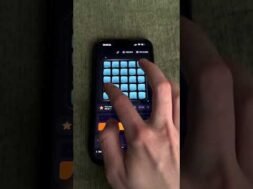Unlocking the Psychology Behind Pattern Recognition in Slot Games
Building upon the foundational understanding of How Reels and Symbols Create Exciting Patterns in Games, it becomes evident that visual patterns are more than mere aesthetic features in slot machines. They are meticulously designed to tap into the human psyche, leveraging cognitive and emotional responses to enhance engagement. This article explores how psychological processes underpin pattern recognition in slot games, transforming simple visual cues into powerful motivators for player behavior.
- The Cognitive Foundations of Pattern Recognition in Gaming
- Psychological Triggers Activated by Slot Patterns
- The Role of Expectancy and the Brain’s Reward System
- Visual and Cognitive Cues That Enhance Pattern Recognition
- Unseen Dimensions: Cognitive Biases and Pattern Perception
- From Recognition to Action: How Psychology Drives Player Behavior
- The Ethical Implications of Leveraging Pattern Psychology
- Connecting Pattern Recognition Psychology Back to Visual Design
The Cognitive Foundations of Pattern Recognition in Gaming
Pattern recognition is a fundamental cognitive process that the brain performs seamlessly, often without conscious effort. In the context of slot games, this involves interpreting complex visual stimuli—reels, symbols, and their arrangements—and translating them into meaningful patterns. Neuroscientific research indicates that the visual cortex, located at the back of the brain, is highly specialized for processing visual information, including shapes, colors, and spatial relationships.
When players observe spinning reels, their brains quickly identify recurring motifs—such as identical symbols lining up or specific sequences—that may signal potential wins. This rapid processing relies on neural mechanisms like pattern matching, where the brain compares incoming visual data with stored templates or learned patterns. Notably, individual differences exist: some players recognize patterns faster and more accurately, influenced by factors like visual acuity, experience, and attentional focus.
Understanding these cognitive foundations helps explain why certain reel designs or symbol arrangements seem more engaging—they align with innate neural processing capabilities, making recognition feel effortless and satisfying.
Psychological Triggers Activated by Slot Patterns
Slot patterns can evoke powerful psychological responses through the mechanism of pattern completion. This phenomenon occurs when the brain, faced with partial or ambiguous visual cues, instinctively fills in missing information to form a complete pattern. For example, seeing a near-miss of matching symbols can trigger a sense of anticipation, reinforcing the desire to continue playing.
Certain patterns also stimulate emotional reactions such as excitement, thrill, or even frustration. For instance, symmetrical and repetitive patterns often produce a sense of order and predictability, which can generate comfort or a feeling of control. Conversely, complex or unpredictable patterns may heighten arousal levels, creating a sense of unpredictability and excitement.
The deliberate use of pattern complexity—ranging from simple, repetitive symbol arrangements to intricate, chaotic designs—serves as a psychological tool to modulate engagement and sustain player interest.
The Role of Expectancy and the Brain’s Reward System
Recognition of familiar or anticipated patterns activates the brain’s reward circuitry, primarily through the release of dopamine—a neurotransmitter associated with pleasure and reinforcement. When a player perceives a pattern close to a winning combination, even if it’s a near-miss, the brain experiences a surge of anticipation, reinforcing the desire to keep playing.
This process is evident in the strategic placement of near-miss patterns, which are designed to stimulate motivation by mimicking the experience of almost winning. Such subtle variations in pattern design keep players engaged, as the brain interprets these cues as signals of potential success.
Reinforcement learning plays a key role here: repeated exposure to pattern recognition and the subsequent reward or near-reward strengthens behavioral tendencies, encouraging players to develop habits—often subconsciously—of continuous play and increased stakes.
Visual and Cognitive Cues That Enhance Pattern Recognition
Design elements like color contrast, luminous animations, and dynamic sound effects serve as visual and auditory cues that direct attention to specific patterns. For example, bright, contrasting colors highlight winning symbols or paylines, making them more salient to the player’s subconscious.
Symmetrical patterns and repetitive motifs further reinforce recognition by engaging the brain’s innate preference for order and predictability. This subconscious bias towards symmetry can make certain arrangements more memorable and satisfying.
Integrating sound cues—such as jingles or chimes—synchronously with visual patterns amplifies the recognition process. The combination of visual and auditory signals leverages multisensory integration, resulting in a more immersive and memorable experience that encourages pattern recognition and subsequent engagement.
Unseen Dimensions: Cognitive Biases and Pattern Perception in Slot Games
While pattern recognition can be a rational process, cognitive biases often distort perception, leading players to see patterns where none exist. The gambler’s fallacy, for example, causes players to believe that a streak of losses increases the likelihood of a win, prompting them to continue betting on perceived “hot” or “cold” patterns.
Similarly, confirmation bias leads players to interpret ambiguous or random outcomes as confirmation of their beliefs—such as perceiving a pattern in a sequence of spins that is statistically random. This bias reinforces their confidence in pattern-based strategies, even when evidence suggests otherwise.
Designers sometimes exploit these biases by creating illusions of control, giving players the perception that their actions influence the outcome through specific pattern arrangements. Recognizing these biases underscores the importance of responsible design and the ethical considerations involved.
From Recognition to Action: How Psychology Drives Player Behavior
Once a pattern is recognized, it often acts as a catalyst for decision-making—most notably, placing bets or increasing stakes. The perceived significance of a pattern, whether real or illusory, influences players to act based on their expectations of imminent reward.
Game designers strategically craft patterns to maximize this effect, using visual cues and psychological triggers to foster a sense of urgency or excitement. For example, a pattern that appears to be on the verge of completing a winning combination can motivate players to increase their bets, driven by the illusion of control and anticipation.
This psychological momentum often leads to increased playtime and higher stakes, creating a cycle where recognition directly fuels behavioral reinforcement, often subconsciously.
The Ethical Implications of Leveraging Pattern Psychology in Slot Design
While harnessing pattern psychology enhances entertainment value, it raises important ethical questions. Balancing engaging design with responsible gaming practices is crucial to prevent manipulation that might lead to problematic gambling behaviors.
Design elements that exploit subconscious pattern recognition—such as near-misses or illusionary control—can inadvertently promote overplay or addiction. Responsible developers aim to incorporate safeguards, like clear messaging and limits, to mitigate these risks.
Ultimately, creating patterns that foster fun and excitement without encouraging harmful habits requires a nuanced understanding of human psychology and a commitment to ethical standards.
Connecting Pattern Recognition Psychology Back to Visual Design
Understanding the psychological mechanisms behind pattern recognition directly informs the visual design process. Designers utilize insights from cognitive science to craft reel layouts, symbol arrangements, and animations that resonate with innate neural tendencies.
For example, recognizing that symmetry and repetition are naturally appealing, designers incorporate these elements into reel patterns to facilitate quick recognition and positive emotional responses. Similarly, the iterative refinement of symbols and animations—based on player feedback and psychological research—optimizes engagement and retention.
In conclusion, the symbiotic relationship between visual pattern creation and psychological impact underscores the importance of a multidisciplinary approach in slot game design. By aligning visual aesthetics with cognitive and emotional triggers, developers can craft experiences that are both captivating and responsible.




